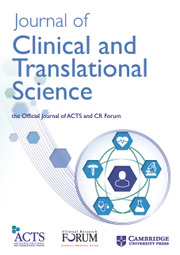No CrossRef data available.
Article contents
440 Muscle Protein Synthesis and Whole-Body Protein Balance Following Ingestion of Beef or a Soy Protein Based Meat Alternative
Published online by Cambridge University Press: 03 April 2024
Abstract
OBJECTIVES/GOALS: We endeavor to investigated the hypothesis that muscle protein synthesis (MPS) is stimulated more after consumption of a 4-ounce beef patty as compared to 4- and 8-ounces of a soy protein based meat alternative (SPBMA) and if a greater stimulation is related to differences in the responses of plasma essential amino acid (EAA) concentrations. METHODS/STUDY POPULATION: Participants were aged 18 to 40 years of age with a BMI between 20 and 32 kg/m2. Written informed consent was obtained from all participants, and approved by UAMS IRB. Participants were assigned to one of three intervention groups via a single-blinded permuted block randomization, stratified for sex: 4 oz beef patty; 4 oz SPBMA; 2 x 4 oz (8oz) SPBMA. The impossible burgerTM was selected as it is primarily soy protein, a high-quality plant protein, and specifically designed to mimic a beef burger. Stable isotope were infused to assess protein metabolism. Appropriate muscle and blood samples were obtained. Enrichment and plasma EAA concentrations were measured with mass spectrometry. ANOVA’s on the change from basal to postprandial were used to identify group difference, significance was accepted at p < 0.05. RESULTS/ANTICIPATED RESULTS: The MPS increase from basal to postprandial indicated a significant main effect of group (p = 0.026), with the beef group (0.020 ± 0.016%/hour) being significantly greater than the 4oz SPBMA (0.003 ± 0.010%/hour; p = 0.021) but not the 8oz PBMA group (0.013 ± 0.016%/hour; p = 0.454). Similar results were observed for whole-body protein synthesis, where the beef group (p = 0.042) and 8oz SPBMA (p = 0.033) were significantly greater than the 4oz SPBMA (p = 0.021). Whole-body protein balance was significantly greater in the 8oz SPBMA as compared to 4oz of beef and SPBMA. Lastly, we observed a significantly relationship (p = 0.046; r = 0.411) between the maximal plasma EAA concentration and change in MPS, indicating the greater rate of MPS following 4oz of beef is mediated by an higher increase in plasma EAA concentrations. DISCUSSION/SIGNIFICANCE: In conclusion, 4oz of beef stimulates muscle protein FSR more than 4oz of a SPBMA. A common SPBMA can stimulate increase in protein metabolism, however, greater amounts are required as compared to beef protein. Further, the change in the muscle protein FSR response was significantly correlated with the maximal EAA concentration.
- Type
- Precision Medicine/Health
- Information
- Creative Commons
- This is an Open Access article, distributed under the terms of the Creative Commons Attribution-NonCommercial-NoDerivatives licence (https://creativecommons.org/licenses/by-nc-nd/4.0/), which permits non-commercial re-use, distribution, and reproduction in any medium, provided the original work is unaltered and is properly cited. The written permission of Cambridge University Press must be obtained for commercial re-use or in order to create a derivative work.
- Copyright
- © The Author(s), 2024. The Association for Clinical and Translational Science


